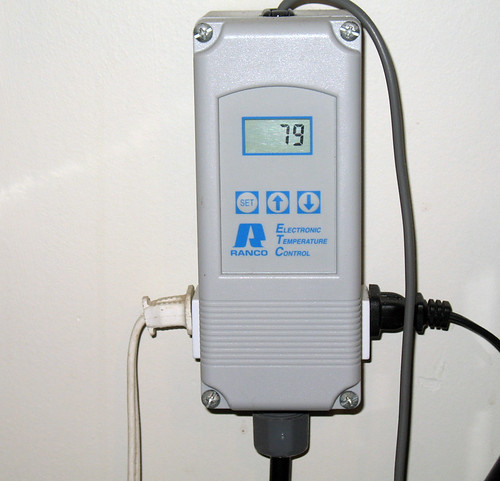First batch of beer is conditioning in the bottle and 1 week away from being ready and I have officially caught the bug and have grandiose plans for brewing. To let you know where im at I did my first extract kit approx 2 months ago (bottle conditioning now) and have a caribou slobber kit from northern brewer to do this weekened so this will be an extract with steeping grain and after I plan on doing a partial mash and then finally an all grain and from there different styles and types of all grain. Does this sound like a good progression. I want to jump to all grain but i figure this helps me pay my dues and ease my way in.
The two long term projects I want to do is get a freezer for lagering and build a kegerator. Here are my initial questions I have:
Anyone want to run down the basics of lagering (from what I know its normal breweing process and then basically lagering at around ~55 degrees at first then bringing it down to around ~34 degrees). What equipment am I going to have to buy? Is this the very basic general gist?
Since I want to do this for the long term, is it worth it to save up money and invest in a 15 cu ft fridge instead of around a 7 cu ft freezer so I can lager more at once, which seems handy because of the time it takes to complete the lagering process?
Okay and for the kegerator, ideally I want to develop a stout, porter, ipa and dopplebock four a 4 tap system as the main staples. Is the dopplebock the only one that would be considered a lager?
For kegerator materials is this a good general materials list:
Fridge
5 5 gallon ball lock kegs (one extra to have some on tap and some conditioning)
5 picnic taps
5 dual gauge regulator
#5 CO2 tank
A couple towers or dispensers
Tubing
Temperature regulator
Im sure Im missing a couple other parts to connect the kegs to the tubing etc.
Thanks in advance
Eric
The two long term projects I want to do is get a freezer for lagering and build a kegerator. Here are my initial questions I have:
Anyone want to run down the basics of lagering (from what I know its normal breweing process and then basically lagering at around ~55 degrees at first then bringing it down to around ~34 degrees). What equipment am I going to have to buy? Is this the very basic general gist?
Since I want to do this for the long term, is it worth it to save up money and invest in a 15 cu ft fridge instead of around a 7 cu ft freezer so I can lager more at once, which seems handy because of the time it takes to complete the lagering process?
Okay and for the kegerator, ideally I want to develop a stout, porter, ipa and dopplebock four a 4 tap system as the main staples. Is the dopplebock the only one that would be considered a lager?
For kegerator materials is this a good general materials list:
Fridge
5 5 gallon ball lock kegs (one extra to have some on tap and some conditioning)
5 picnic taps
5 dual gauge regulator
#5 CO2 tank
A couple towers or dispensers
Tubing
Temperature regulator
Im sure Im missing a couple other parts to connect the kegs to the tubing etc.
Thanks in advance
Eric


















![Craft A Brew - Safale S-04 Dry Yeast - Fermentis - English Ale Dry Yeast - For English and American Ales and Hard Apple Ciders - Ingredients for Home Brewing - Beer Making Supplies - [1 Pack]](https://m.media-amazon.com/images/I/41fVGNh6JfL._SL500_.jpg)







































